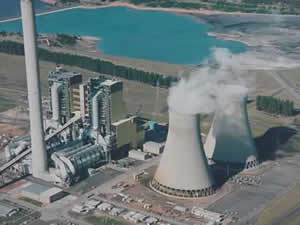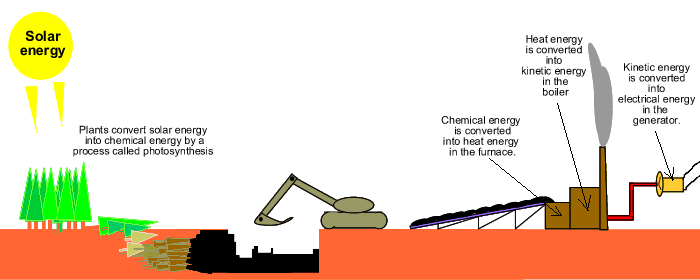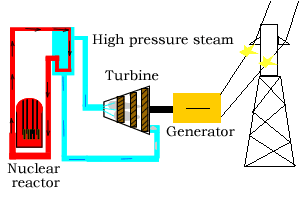A tram, pictured on the right, converts electrical energy into kinetic energy. The presence of energy is not always obvious

Energy can be stored in many forms. Stored energy is known as potential
energy. The energy released during this explosion comes
from energy stored in the bonds of chemicals such as trinitrotoluene (TNT).
During an explosion, chemical potential energy is converted into kinetic,
light and heat energy.
During such energy transformations, the total amount of energy present
remains unchanged. This is known as the Law of Conservation
of Energy.

Our society is always hungry for energy. Most of Australia's electrical energy comes from the conversion of chemical energy stored in coal. In Victoria's La Trobe Valley chemical potential energy, in the form of brown coal, is converted into electrical energy.
However, this process is only about 35% efficient. The majority of the chemical potential energy found in brown coal is lost as heat to the atmosphere.
The animation below outlines how a coal fired power station works and the energy conversions that take place.


The atomic nucleus contains a great deal of energy. The uranium isotope 235U is the fuel source for nuclear energy. The uranium atoms are bombarded with neutrons and split with the release of energy in a process called nuclear fission. The nuclear reaction that takes place forms new elements and releases more neutrons which split more atoms causing a chain reaction with the release of an incredible amount of energy. The energy released during nuclear fission is used to convert water into steam which drives the turbines.
Nuclear power stations have reactors in which control rods are inserted. These control rods absorb some of the neutrons and control the rate at which the nuclear reaction proceeds.
 |
Control
rods, shown in black, absorb free neutrons and slow the reaction
to manageable rates. |
Hide |
Click to see the nuclear reaction taking place in the reactor.
 |
| The nuclear reaction can be slowed down by inserting extra control rods. As more neutrons are absorbed less neutrons are available to split the uranium atoms (orange). |
Hide |
How can the reaction be slowed down? Solution
